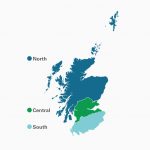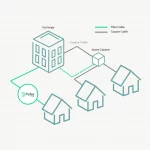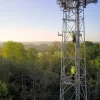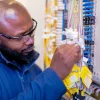A Guide to Switching UK Broadband and Phone Provider After June 2015
The way in which consumers switch between different fixed line home broadband ISP and phone providers in the United Kingdom will soon change, hopefully for the better. Here’s a quick rundown of what you need to how and how it will impact your ability to change provider.
People swap providers for all sorts of reasons, although the most common examples typically relate to dissatisfaction with an existing service or stem from a desire to seek something that’s cheaper, faster and or generally more capable than what they already have.
Advertisement
The Current System
Unfortunately the current approach can sometimes appear to be confusing and it’s also prone to many different types of errors. Some of these issues could affect your downtime and might result in a lost phone number or may even introduce additional costs. Broadly speaking, the current migration methods boil down to one of three different approaches (below).
Some of these methods are known as a Losing Provider Led (LPL) process, which means that they rely upon your existing ISP being engaged and responsive. Others are called Gaining Provider Led (GPL), which means the customer must initiate the switch via their new provider (instead of the existing ISP).
The Old Migration Systems (Pre-June 2015)
Migration Authorisation Codes (LPL MAC)
The MAC process requires a customer to first contact their existing (losing) ISP and request the migration code, which the ISP must then supply within 5 working days (the code then remains valid for 30 days). After that the customer supplies this MAC to their new (gaining) ISP, which is used to complete the switch.
Generally speaking the MAC process, which can take up to 10 days, remains one of the smoothest (minimal downtime) and is most typically only used alongside broadband migrations between different ISPs on Openreach’s (BT) national telecoms network. But MACs become problematic if your ISP doesn’t respond to support requests or fails to produce a working code (some providers do this deliberately in order to make it harder for you to leave).
Notification of Transfer (GPL NoT)
Customers who wish to move both their broadband and or phone (bundled) service to a new provider, particularly one that uses a fully unbundled (MPF) line on Openreach’s network (e.g. Sky Broadband or TalkTalk), often take the GPL NoT process. In this approach you only need to contact the new (gaining) ISP in order to start the switching process, no special migration code is required.
The customer can then expect to receive communication from both their new and existing provider, which will provide information about the switch (e.g. if any termination charges apply) and give you the option to cancel. The process should take 10 days, but downtime or other problems (e.g. lost phone numbers) can occur.
Cease & Re-provide (C&R)
In this manual and customer managed approach process the end-user effectively cancels (ceases) their existing service and then has a new service installed with a different (gaining) provider. Customers are most likely to use this approach when switching between different physical infrastructures, such as when moving to Virgin Media’s cable network from Openreach’s platform. C&R is sometimes also used to get around awkward migration problems or errors with the other two systems.
The downside to a C&R is that it can incur extra costs (i.e. the £25-£50 cost of the cease or exit fee and then more for a new line connection), may create a longer period of downtime and there’s also a greater risk of losing your existing phone number. In essence you’re most likely to use this when no other option exists.
Ofcom estimates that there are around 2.8 million completed switches on BTOpenreach’s national UK telecoms infrastructure per year and a study they conducted in 2010 indicated that the vast majority of switches (75%) went through the GPL NoT process, while 7% used LPL MAC and 18% (estimated) went through C&R.
Another study conducted by the regulator in 2011 also noted how 42% of broadband consumers who went through a C&R process should have actually gone through the NoT process. Likewise some ISPs have also used a C&R when they should have chosen to do a LPL MAC.
Advertisement
In theory the existing approaches do get the job done, but we still see plenty of complaints. Ofcom reasons that most of those gripes could be overcome by harmonising switching behind a single approach and putting the switching power for all of the methods into the hands of your new (gaining) ISP.
The New System (June 2015 Onwards)
The solution that Ofcom has chosen to adopt involves harmonising the above switching processes and converting them into a single solution based on the existing GPL NoT model, which the regulator calls GPL NoT+. The whole industry will move to the new process simultaneously on 20th June 2015, which means the older methods will no longer be used.
A single switching process is obviously easier for consumers and this in turn should promote more competition. In our opinion this is long overdue, having already taken over 5 years to reach this stage (mostly due to industry concerns over costs, security, technical problems and general bickering). Otherwise the new process works as follows.
The New Switching Process (Approx. Length: 10 Working Days)
1. A consumer contacts their new / chosen (gaining) ISP and requests to switch. By starting this process the consumer is also beginning an automatic cancellation of the old service with their existing provider.
2. The gaining ISP begins the order process by using the customer’s existing telephone number and postcode, which is sent to an electronic gateway for validation.
3. At this point if the postcode and phone number details are incorrect (i.e. they must be an EXACT match) then they won’t be validated and the order would be rejected (Openreach performs this test on BT’s national UK telecoms network, while for consumers in Hull it would be KC that does the check).
4. The old (losing) ISP is notified of the switch via the electronic gateway mentioned in no.2.
5. The gaining ISP sends out a Notification of Transfer letter to the customers address. This letter will be sent by normal post, unless the customer has explicitly agreed to receive the correspondence electronically (e.g. email).
Contents of the NoT Letter
Ofcom requires that this letter set out in clear and intelligible terms:
(a) The date of the letter;
(b) That the Customer is transferring their Communications Service;
(c) All Communications Services that will be transferred;
(d) Where relevant, the phone number of all Communications Services that will be transferred;
(e) A reasonable estimate of the Migration Date;
(f) The right of the Customer to terminate the contract as set out in General Condition 22.5, the means by which the right to terminate can be exercised and the date by which the right to terminate must be exercised; and
(g) Relevant contact details.6. The losing provider sends out a similar switching letter to the customer, albeit one that includes information about any exit fees or other issues that may impact your service (e.g. the possible need to return your old ISPs bundled broadband router). Ofcom states that there is a “prohibition on marketing statements / representations” during this period, which means the losing provider cannot use special offers or discounts to entice you into stopping the switch.
7. Should the consumer change their mind then, with effect from the start of this process, they will have a minimum of 10 working days to contact the new (gaining) ISP and stop the switch.
Meanwhile consumers who fear that they’ve become a victim of slamming (i.e. being switched without your knowledge or consent) should instead contact their existing (losing) provider, which will use Ofcom’s Cancel Other process to stop the order going ahead. Consumers are also advised to contact the gaining provider too.
8. If no cancellation is received within the 10 day transfer period then the service is officially switched.
The new process, which is broadly the same as the current NoT system, also requires that your new (gaining) provider obtain a “direct record of consent” for your request to switch, which might be a written signature or, in the case of telesales, voice recordings. Gaining providers must retain records of such consents for 12 months.
Advertisement
In our opinion it’s also wise for consumers to contact their existing ISP, particularly if you’re still under contract, before you start this process in order to check what, if any, leaving or exit fees might apply if you choose to leave. Savvy consumers can also use this as a tactic to extract a discount on your current service, but if you do intend to do that then do so before starting the switch (see no.6 above).
Take note that the new process is governed by Ofcom’s General Condition 22 rules (SERVICE MIGRATIONS AND HOME-MOVES). The regulator also has an industry-wide monitoring and enforcement programme that will keep tabs on ISPs to ensure compliance and investigate any significant abuses, which also affords them the power to fine companies and require them to remedy the consequences of any breach.
NOTE: Regardless of the process you follow, you have a 14 calendar day period from the date you enter a new contract with a new provider in which you have a right to cancel your request to switch without being charged.
Caveats
As you’d expect the new system isn’t perfect and currently only applies to BTOpenreach’s national telecoms platform and its related copper phone and broadband products (e.g. ADSL, FTTC etc.). Separately it also applies to KC’s similar network, albeit only affecting local ISPs.
In other words Virgin Media’s cable network, as well as satellite, fixed wireless and pure fibre optic (FTTH/P) ISPs, such as Hyperoptic, Gigaclear and B4RN, do not have to comply with the new rules because they operate off physically separate platforms and in some cases only have to deal with a much smaller number of customers.
Ofcom is reviewing whether or not the current process could be further expanded to include more services and platforms, but at the time of writing this remains an on-going process. As a result customers wishing to move between, for example, BT and Virgin’s platform will need to order the service as new from scratch (i.e. cease and re-provide).
In addition, Ofcom have confirmed that the new process does not cover lines provided by an ISP to any business with more than 10 people working for it. An obvious way around this is for smaller businesses not to tell their ISP how many people work for them or to simply give a smaller figure.
Another problem relates to any plans that BTOpenreach may have for introducing a “Naked DSL” product, or Single-Order GEA-FTTC as it’s officially known (here), which is designed to offer consumers a standalone broadband product without the voice / phone service attached (though you’d still need the physical copper line). It’s possible that this may create migration problems if the service does not include a phone number, although we suspect that a solution could be found.
Some are also concerned that the new system may not provide enough protection against SLAMMING (being switched without your consent), although admittedly this is no longer an especially common scam.
Ultimately though the new process should make life easier for consumers, although we wouldn’t be at all surprised if there was still some confusion among both ISP support staff and consumers around the initial switch over date. Meanwhile a lot of ISPs are unhappy about the extra costs involved with adopting and catering for GPL NoT+.
IMPORTANT NOTE (Phone Numbers): Sadly the current migration system is far from perfect and the loss of your existing phone number can be a common problem. Most people should expect to lose their phone number during a house move because your new property will often be in a different telephone exchange area, which prevents the ISP from moving your number with the service (even if it’s still on Openreach’s network).
Mark is a professional technology writer, IT consultant and computer engineer from Dorset (England), he also founded ISPreview in 1999 and enjoys analysing the latest telecoms and broadband developments. Find me on X (Twitter), Mastodon, Facebook, BlueSky, Threads.net and Linkedin.
















































Comments are closed